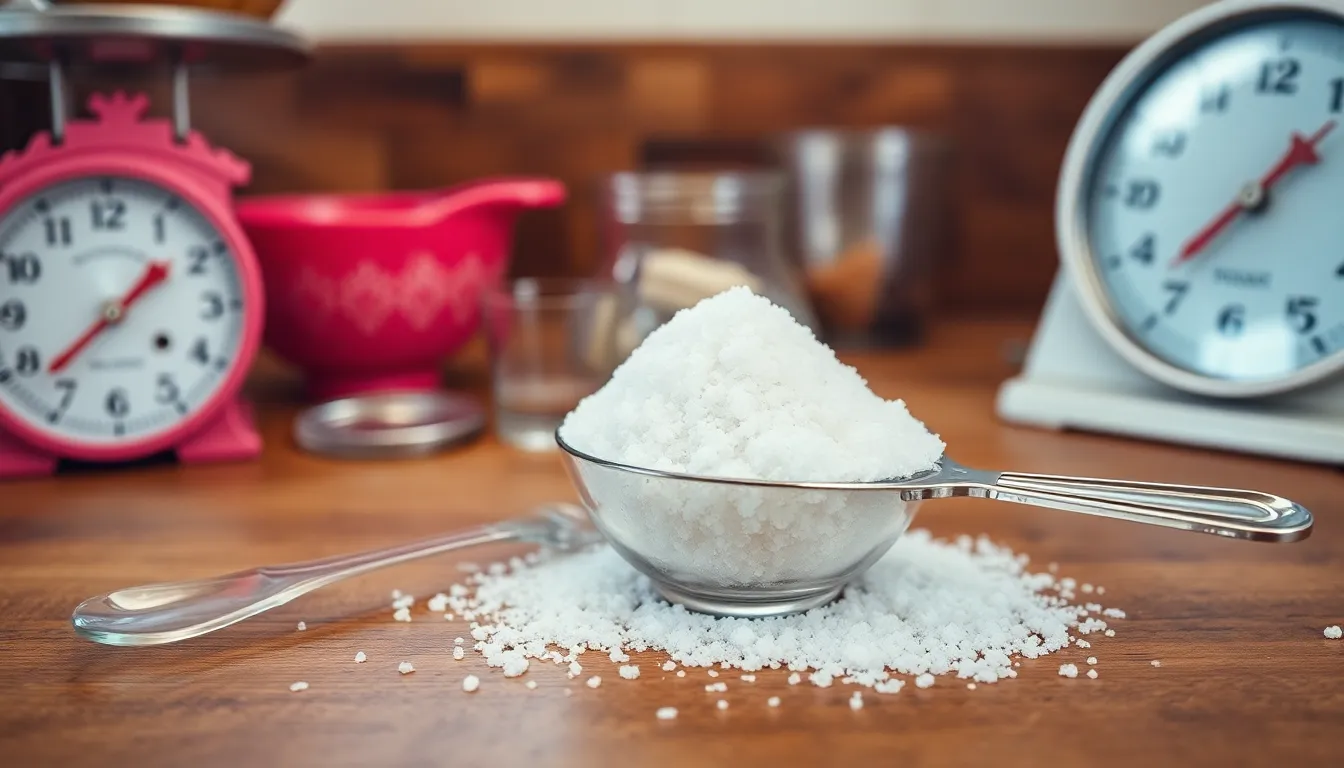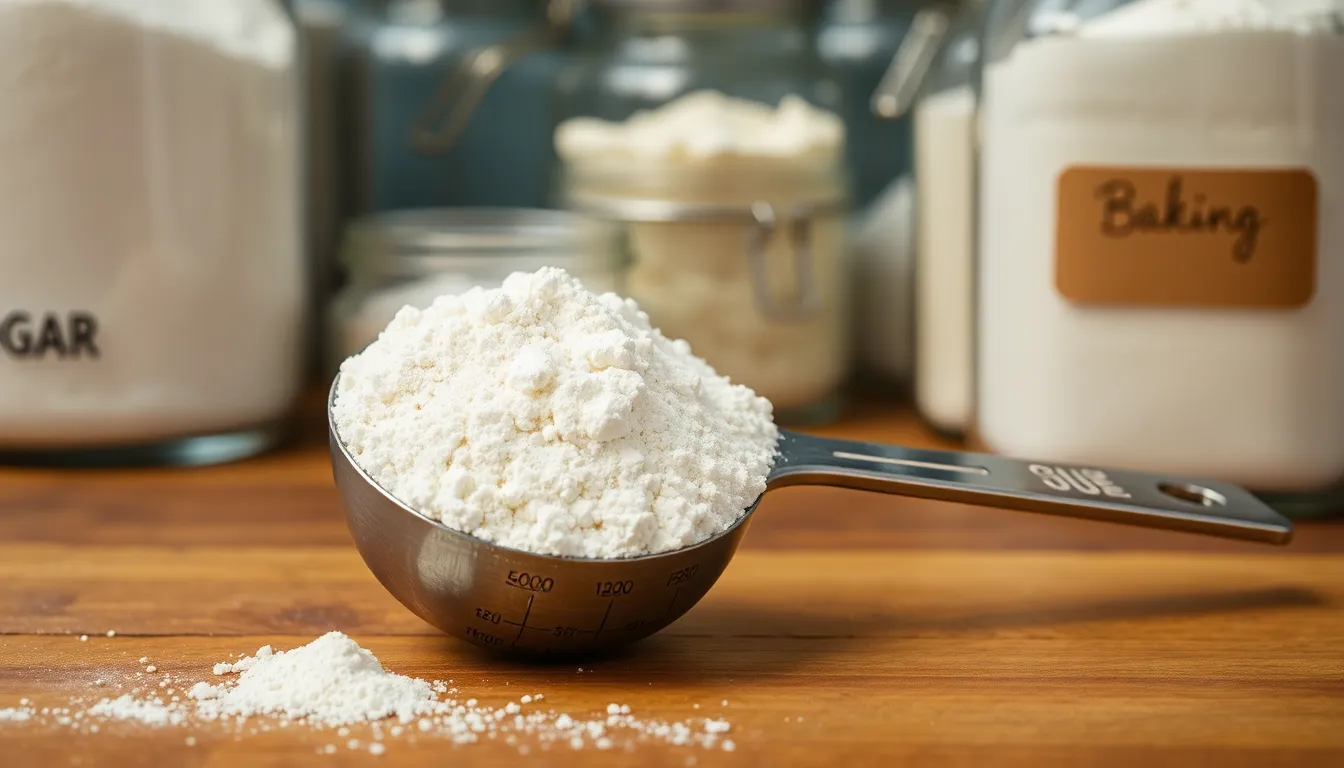Ever found yourself in the kitchen, staring down a recipe that calls for a teaspoon of something mysterious? Suddenly, you’re left wondering how many milligrams that actually is. It’s like trying to solve a math problem while your dinner’s on the line! But fear not, because understanding these conversions is easier than you think.
Table of Contents
ToggleUnderstanding Measurements
Conversions in cooking can seem complex, especially when dealing with teaspoons and milligrams. Grasping these measurements fosters accuracy in recipes.
What Is a Teaspoon?
A teaspoon is a common unit of volume used in cooking. This measure typically equals approximately 5 milliliters. Understanding its equivalence facilitates ingredient conversions. Teaspoons often serve as a standard for measuring both liquids and solids. For example, a teaspoon of sugar weighs about 4.2 grams. When converting, knowing the precise volume units is essential.
The Role of Milligrams in Measurement
Milligrams are a metric unit used to quantify mass. One milligram equals one-thousandth of a gram. This unit proves particularly useful for precise ingredient measurements. In nutrition, milligrams measure vitamins and minerals, ensuring proper intake. For instance, knowing that a teaspoon of salt weighs about 6,000 milligrams helps with dietary tracking. Understanding milligrams enables better control over health and recipes.
Converting Teaspoons to Milligrams


Understanding conversions from teaspoons to milligrams simplifies the cooking process. Various ingredients differ in density, making this conversion essential for accuracy.
Common Conversions
Common teaspoon measurements include several ingredients. For instance, one teaspoon of sugar weighs about 4.2 grams, which equals 4,200 milligrams. Similarly, one teaspoon of flour approximates 3.3 grams or 3,300 milligrams. Both salt and baking powder also have unique weights. A teaspoon of salt generally weighs around 6 grams, translating to 6,000 milligrams. These conversions help ensure consistent recipe results.
Factors Influencing Milligram Content
Several factors contribute to the milligram content of a teaspoon. Ingredient density plays a significant role; heavier substances yield higher milligrams. For example, powdered substances tend to pack tighter, resulting in greater weight per teaspoon. Moisture content influences weights as well; wetter ingredients can differ from drier ones. Finally, how ingredients are measured affects results; scooping versus leveling can lead to variances. Understanding these elements aids in accurate cooking and nutrition tracking.
Practical Applications
Conversions from teaspoons to milligrams play a crucial role in various fields, including cooking and medicine. Precise measurements enhance quality and safety across these applications.
Cooking and Baking
In cooking and baking, understanding milligram conversions ensures accurate ingredient ratios. For instance, a teaspoon of sugar weighs about 4,200 milligrams while the same volume of flour approximates 3,300 milligrams. Chefs rely on these conversions to maintain consistency and flavor in recipes. A small variation in ingredients can alter a dish significantly. Recipes often list measurements in teaspoons, but using weight in milligrams results in better precision, especially with dense ingredients like brown sugar. Accuracy in these conversions prevents over or under-measuring, ensuring delicious outcomes every time.
Medicine and Dosage
Health professionals frequently depend on milligram measurements for precise dosing of medications. A teaspoon of liquid medicine can contain varying milligram amounts based on concentration. Doctors prescribe dosages in milligrams to ensure safety and effectiveness. A teaspoon of cough syrup might deliver 5,000 milligrams of active ingredients, impacting a patient’s treatment. Clear understanding of these conversions allows for proper medication management. In pediatric care, dosing often requires careful calculation based on weight, underscoring the importance of knowing how many milligrams are in a teaspoon. Accurate conversions promote effective health outcomes, protecting patient well-being.
Tips for Accurate Conversions
Accurate conversions enhance recipe success. By using the right tools and being aware of common mistakes, one can improve measurement precision.
Tools and Resources
Utilizing digital scales provides the most reliable measurements in milligrams. Kitchen measuring spoons also aid in conversions, particularly those labeled with metric values. Online conversion calculators serve as helpful resources for quick reference. Mobile apps for cooking can store data and simplify calculations. Cookbooks often contain conversion charts, offering a straightforward way to check standard measurements.
Common Mistakes to Avoid
Relying solely on volume measurements can lead to inaccurate conversions. Different ingredients possess varying densities, which affects weight significantly. Forgetting to level off measuring spoons can increase ingredient amounts unexpectedly. Substituting one teaspoon for another without considering the specific ingredient weight often creates issues. Ignoring moisture content may skew results as well. Keep these factors in mind for improved accuracy in cooking and nutrition tracking.
Mastering the conversion of teaspoons to milligrams significantly enhances both cooking and health management. By understanding the weight of various ingredients measured in teaspoons, individuals can achieve greater accuracy in their recipes. This knowledge not only leads to better culinary results but also aids in nutritional tracking, ensuring a balanced diet.
Utilizing the right tools and being aware of common measurement pitfalls can make a world of difference. As they become more comfortable with these conversions, they’ll find that cooking and managing dietary needs can be a more enjoyable and precise experience. Embracing these practices ultimately promotes a healthier lifestyle and more successful culinary endeavors.



